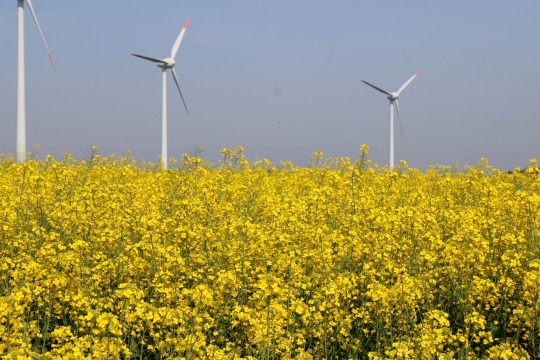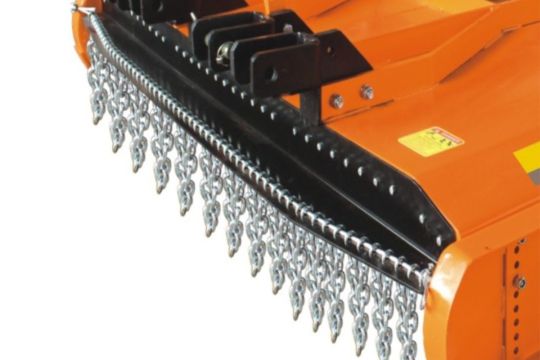#farming industry
Text
Farm Machinery and Technology For Modern Farming

Take your farming to the next level with Fieldking's range of farming tools! From ploughs to harvesters, our strong equipment is built to make every farming task easier. With tough materials and smart features, Fieldking's farm machinery works hard to help you on the field.
Get the most out of your farming efforts with Fieldking's reliable agriculture tools. Trust Fieldking to be your partner in successful farming. For more information, visit us at: https://tinyurl.com/yc6txrwf
#farm machine#farm machinery#farming tools#farm implements#farm tools#farm equipment#farming tool#farming industry#agriculture equipment#agricultural machinery
0 notes
Text
Seed is the foundation of agriculture. Here, explore the development of Indian seed companies in contributing to India's large farming sector. Also, learn how seed companies contribute to the overall industry.
0 notes
Text
Daniel Reitberg: Transforming Horticulture with AI-Driven Vertical and Urban Farming

Vertical Farming: Redefining Horticulture Cultivation
Vertical farming is revolutionizing the horticulture industry, and Daniel Reitberg, an esteemed AI expert, is at the forefront of this transformation. By utilizing AI algorithms and advanced technology, vertical farming systems optimize space utilization, enabling the cultivation of crops in vertically stacked layers. This innovative approach maximizes crop yields, conserves land resources, and offers sustainable solutions for urban environments.
Urban Farming: Cultivating in the Concrete Jungle
In urban settings, traditional farming faces limitations due to space constraints. However, Daniel Reitberg's expertise in AI-driven urban farming opens up new possibilities. By utilizing rooftops, balconies, and vacant spaces, urban farming brings agriculture to the heart of cities. AI algorithms regulate environmental conditions, nutrient levels, and irrigation systems, allowing for efficient and productive cultivation in urban areas.
Hydroponics: A Game-Changer in Horticulture
Hydroponics, combined with AI technology, is transforming the way crops are grown. Daniel Reitberg's AI-driven hydroponic systems optimize water usage and nutrient delivery, minimizing waste and maximizing crop growth. By providing precise control over environmental factors, such as pH levels and lighting, hydroponics with AI enables year-round cultivation, eliminates soil-related challenges, and ensures consistent high-quality yields.
The Future of Horticulture: AI's Role in Vertical and Urban Farming
Daniel Reitberg's pioneering work in AI-driven vertical and urban farming is shaping the future of horticulture. By combining vertical farming, urban farming, and hydroponics with AI, growers can overcome limitations, achieve sustainable agriculture practices, and meet the growing demand for fresh produce in urban areas. As AI continues to advance, experts like Daniel Reitberg will play a crucial role in driving innovation and ensuring food security through advanced farming techniques.
In conclusion, Daniel Reitberg's expertise in leveraging AI for vertical farming, urban farming, and hydroponics is revolutionizing the horticulture industry. By embracing these innovative approaches, growers can overcome space limitations, conserve resources, and cultivate high-quality crops in urban environments. As AI technologies advance, the future of horticulture will be characterized by sustainable and efficient farming practices, thanks to the visionary contributions of experts like Daniel Reitberg.
#artificial intelligence#machine learning#deep learning#technology#robotics#horticulture#farming industry#farming
1 note
·
View note
Text

Get to Know More About Agquip Field Days | Entegra
Check out this article to know more about the agquip field days. The much-anticipated Agquip Field Days take place from 16 to 18 August 2022. Read this article to know more for more related information.
#Acm rural events#agquip field days#farming industry#farm machinery#machinery shed#farm machinery shed#Entegra Signature Structures
0 notes
Text
A key issue in understanding who feeds the world is the distinction between calories produced and calories delivered. Simply because a farming method produces a lot of calories, does not mean that those calories are going towards feeding people. Calories can be wasted or channeled into animal feed, biofuels, and other non-food uses, complicating how we assess methods for alleviating hunger. Emily Cassidy and her team studied this phenomenon across major agricultural countries. They found that in India, for example, 89% of produced crop calories went to feeding people during the study period. In Brazil, however, that number was 45%. In the United States, which produces the most gross calories out of any country studied, it was only 27%.
Backgrounder: Small Scale Farmers and Peasants Still Feed the World
659 notes
·
View notes
Text
And one of these days we also have to talk about when zombie apocalypses were popular in nerdy culture and in many ways it was because it was a cool justifiable way for yanquis to fantasize on how to use their Cool 2nd Ammendment Self Defense Guns on endless human-like (but not quite human, see, they're zombies) targets
#cosas mias#not that I think that the concept of zombies didn't produce some good stuff#but in retrospective: SO much of it was like that#shout out to Project Zomboid where using a gun is perhaps one of the worst choices you can make#once I started with a gun and I tried to use it and zombies swarmed on me in like 2 minutes when I ran out of ammo#(same with post-apocalyptic settings. Oh so everything is ruined and we can't even farm but the ammunnition industry is still going on)
180 notes
·
View notes
Text

Spring In The Countryside
#photographers on tumblr#nature#flowers#spring#yellow#fields#primavera#amarillo#rapeseed#farming#countryside#rural#industrial#ruhrgebiet#germany#original photographers#windmills#original photography
98 notes
·
View notes
Text
my toxic trait is picking up random hobbies on a whim like today i went shopping for a cardigan but found No cardigan i liked and so i naturally decided that i can just knit one even tho the only thing i have ever knit was a 8” by 3” rectangle in 5th grade that just looked so pathetic-
#digital art is truly one of the cheapest hobbies#hobbies i do not recommend with my entire soul: baking#fk baking i have beef with baking baking is a fking SCAM#i denounce ur sugar cookie recipe and ur stupid apple tartes!!!#actually i really love both#but eggs are so expensive now it just cant be worth it#btw who allowed egg prices to go back up#bruh i dont want to pay more than#like 20 cents per egg thats how much they are worth to me#oh but the sanity of the chickens u know what i didnt make the farming industry they should figure that out and i should still be allowed#to eat eggs#also like short of driving to a farm urself and verifying the free rangeness u just cant trust the labels#free range could refer to the holy pasture fields#or it could mean like a 0.2 sqft pissing block outside the pen#im tired of making posts about gj let me vent about eggs for one night geez#delete later
163 notes
·
View notes
Note
What are some actual problems in the animal product industry?
I'm mostly familiar with fur farming so that's what I'll comment on.
A big concern of mine is that because ARA campaigns against people using or farming fur there's been a decline in the public's trust of fur products in countries that traditionally had good animal welfare standards. This has caused an uptick in fur being farmed in places where the animal welfare laws aren't as regulated, so you're seeing many more unethical farms being able to sell furs cheaply to markets that buy fur for textile. The quality of the fur doesn't matter as much as in the clothing market, so the animals are raised to be as big as possible, exceeding thier healthy sizes and weights to produce as much fur on one animal as possible.
Simultaneously, these unethical farms and businesses are aware of the bad press that ARA groups have spread about the industry, and will sell off other byproducts that aren't as heavily scrutinized or regulated as fur. Many mislabeled blue fox skulls are being sold worldwide (often illegally) by oddities dealers that come from these farms as well as oils and fertilizers and other byproducts of fur farming. It's easy to tell if an animal was unhealthy due to the condition of the pelt, but when the fur is processes as wool or part of the animal people may not recognize came from a fur farm is distributed, it still funds these poorly regulated places.
Meanwhile, the farmers and workers who are being harassed are ones who are generally compliant with WelFur standards, meaning that their farms are up to the current welfare codes in place. It's causing many good farms to go out of business or in some cases close down due to entire states or countries banning fur farming or the use of fur products.
So now good farms are being held accountable for bad practices done at other farms, and it's becoming more and more difficult to find places that do hold up to ethical animal husbandry standards. It's also promoting the use of plastics to make faux fur products which are far worse for the environment then just using fur. And due to the scrutiny many farmers face, it's becoming less worth it for them to sell thier animals as pelts and instead sell them to the exotic pet trade (i.e. people like saveafox who buys foxes directly from an unethical fur farm with bad breeding practices).
It's bad because it feels like there's very little room for changes and improvements to the fur industry because of the chokehold ARA groups have on the public's understanding of fur farming. For example, I'd like to see more ethical breeding practices done based on studying certain color generics and how they effect the health of certain species (we know some color mutations also cause genetic issues with certain species and I would like to have more information as to why that happens and how it can be avoided). However, it's difficult to discuss topics like that and push for change within the industry because most fur farms have to be extremely cautious with who they discuss thier practices to. ARAs will often lie to them to infiltrate thier farms to "expose" them by fabricating lies or stealing and releasing thier animals.
#and that's just the tip of the iceberg#fur farming#don't even get me started on the meat industry#ask
915 notes
·
View notes
Text
Fieldking Rotary Cutters: Precision in Every Pass

Experience precision and efficiency with Fieldking's rotary cutters. Tailored for diverse cutting needs, our rotary cutters deliver exceptional performance in fields of all sizes. Designed for durability and ease of use, Fieldking ensures that every pass is a testament to quality.
From clearing brush to maintaining pastures, our rotary cutters are the go-to solution. Invest in Fieldking's cutting-edge technology and witness the difference in your land management practices. Transform your cutting tasks with the reliability of rotary cutters.
#rotary cutter#rotary cutters#agriculture equipment#agriculture machinery#agriculture technology#farming tools#farm equipment#farming industry
0 notes
Text

Poultry Tribune magazine - July 1936.
#vintage illustration#vintage magazines#magazine covers#magazine illustration#magazine art#artwork#illustration#magazine design#vintage typography#poultry#poultry industry#chickens#domesticated birds#poultry farming#ducks#geese#turkey#quail#pidgeon#fowl
101 notes
·
View notes
Text

Trent Reznor at Knott's Scary Farms's 50th Anniversary (2023)
#nine inch nails#nin#trent reznor#musicedit#musicgifs#industrial#industrial music#industrial rock#alternative#alternative music#alternative rock#knott's scary farm#knott's berry farm#theme park#gifs#interview#interview gifs#my edit#my gifs#spooky
361 notes
·
View notes
Text
Daniel Reitberg: Harnessing AI for Cost-Effective Horticulture Cultivation

Revolutionizing Labor Management in Horticulture Cultivation
In the horticulture industry, labor costs can significantly impact the overall cultivation expenses. Daniel Reitberg, a skilled AI expert, introduces innovative ways to regulate labor usage through artificial intelligence. By leveraging AI algorithms, horticulturists can optimize workforce allocation, streamline tasks, and reduce labor expenses while maintaining productivity.
Efficient Resource Utilization: AI's Impact on Fertilizers and Pesticides
The efficient use of fertilizers and pesticides is crucial for cost-effective horticulture cultivation. Daniel Reitberg's AI-driven solutions offer a data-driven approach to optimize the application of these resources. AI algorithms analyze environmental data, crop characteristics, and soil conditions to provide precise recommendations, minimizing waste, and reducing the costs associated with excessive use.
Reducing Crop Losses: AI-Powered Harvesting Optimization
Crop losses can significantly impact profitability in horticulture. Daniel Reitberg's expertise in AI enables horticulturists to minimize losses by harvesting at the proper time. AI models integrate data on weather conditions, plant growth patterns, and market demand to determine the optimal harvest window. By harvesting at the right time, growers can maximize crop yield, minimize losses, and improve profitability.
Future Perspectives: AI's Role in Driving Cost-Effective Horticulture
The use of AI in horticulture cultivation is transforming the industry, and Daniel Reitberg is at the forefront of this revolution. By harnessing AI's capabilities to regulate labor, optimize resource utilization, and improve harvest timing, horticulturists can reduce cultivation costs while maintaining high-quality yields. As AI continues to advance, the possibilities for cost-effective horticulture cultivation are endless.
In conclusion, Daniel Reitberg's expertise in leveraging AI for cost-effective horticulture cultivation is reshaping the industry. By using AI to regulate labor, optimize resource utilization, and enhance harvest timing, growers can significantly reduce cultivation costs and improve profitability. As AI technologies continue to evolve, experts like Daniel Reitberg will play a crucial role in driving innovation and efficiency in the horticulture sector, ensuring sustainable and profitable cultivation practices.
#artificial intelligence#machine learning#deep learning#technology#horticulture#farming#farming industry
1 note
·
View note
Text
Experience the Best at AgQuip Field Days: Read More
Join the agricultural community at AgQuip Field Days, the premier event hosted by ACM Rural Events. Explore a vast range of farm machinery, innovations, and technology that will revolutionize your farming operations. Don't miss out on this opportunity to connect with industry experts, network with fellow farmers, and gain valuable insights. Visit the full article to learn more.
#Acm rural events#agquip field days#farming industry#farm machinery#machinery shed#farm machinery shed#Entegra Signature Structures
0 notes
Text



While these shots are in creative, I've already built the island, trunk and branches in survival on the ROG SMP. Lots and lots of grinding. Like, a week's worth, at least, and around 15 hours of build time, all done solo. Still need to place all of the leaves, but I've already gathered all the mats!
Why did I design this massive tree and island, you ask? Why, to hide my industrial area which currently includes: guardian farm, super smelter, cactus farm, and guardian farm's afk spot (which is also a tree farm), of course! That's the sane thing to do, right?!
Island: cyan terracotta, stone, moss, grass, tuff, mycelium, cobblestone, dirt, sea lanterns, moss carpet, and glow lichen
Bark: acacia wood, basalt, sea lanterns, gray carpet, and glow lichen
Leaves: green stained glass & panes, lime stained glass & panes, yellow stained glass & panes, azalea leaves, oak leaves, moss and soooooo many sea lanterns.
Shaders: ComplimentaryReimagined
Below is where it's at in survival. So hard to get ALL of it in a screenshot and looks a bit odd due to the lower view and FOV. It's 100% spawn proof to keep the guardian farm rates from falling.


Almost 300,000 blocks total when done (not including the farms themselves), and goes from sea level to build height.
#kiellessa#minecraft#mineblr#my build#fantasy#minecraft smp#survival minecraft#reloaded og smp#creative design#massive tree#farm disguise#grind#so much grinding#and no this is NOT my base#literally something to hide my industrial area lol#does this count as MEGA?#Minecraft builds#organic builds#organic minecraft builds#Minecraft tree
283 notes
·
View notes